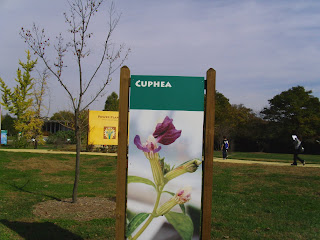Case in point is the good, cheap (but no longer uber-cheap) Polaroid i1035 camera. I found out the hard way that it's best to search online for inexpensive digital cameras, because retailers love to pull the old bait and switch. (A Target employee actually admitted that they only had five bargain cameras in store, the day after they went on sale, which was the last straw for me.) I searched for a bargain camera because, being a photography newbie, didn't want to purchase too much camera for my abilities. I also didn't want to spend much because there are other useful camera-related items to get, such as rechargeable batteries and charger, SD card, and case (which I regret not purchasing earlier. But I digress).
So, earlier this year, I bought the i1035 at buy.com for $70, including shipping. (Unfortunately, not buying a camera case soon after meant that the camera got fried in the car a few months later, meaning that I ended up buying another i1035 for a total of $91 at Amazon, after putting up with a different, less cheap camera from another manufacturer.) Also unfortunate is that buy.com no longer sells this camera, although other sites do, such as Amazon. (Via Amazon, if you get the camera through Zeeland, you'll snag a great bargain, as it's the retailer that offered it at a great price earlier at buy.com.)
This Polaroid is lightweight, compact, yet has many features, at least ones that interest me, such as digital image stabilization (anti-shaking), and a nice large, 3 inch LCD screen:
 In practical terms, the generous screen means that a viewfinder is not necessary (and not even particularly desirable). The camera is easy to open (this was an issue for me with a Canon Powershoot A series camera, which took a long time to open to insert the batteries), and the features are easonably easy to use.
In practical terms, the generous screen means that a viewfinder is not necessary (and not even particularly desirable). The camera is easy to open (this was an issue for me with a Canon Powershoot A series camera, which took a long time to open to insert the batteries), and the features are easonably easy to use.
If you're a long-suffering Vista user, you don't even have to download software to transfer the photos to your PC--just hook up the camera to the computer via the USB cable, and click on the appropriate folders.
The default resolution is quite high, so the camera eats batteries (but then, don't they all?), so please store batteries in the case when you're not about to use it. (The case I use has room for both camera and loose batteries.) The high resolution means that pictures tend to come out quite clear (at least if you don't bother with the digital zoom, which even the manual warns against).
Since another holiday is coming up, I'm sure I'll get around to using its fancy features, such as:
However, for the immediate future, it's sufficient that I can take nice pictures with the Polaroid i1035, like many of the ones in the slideshow on the right.


























